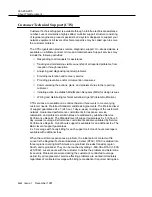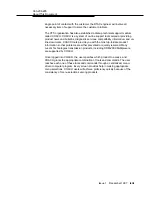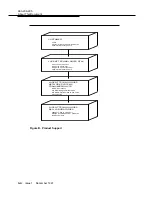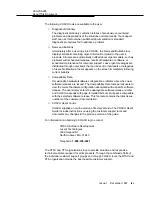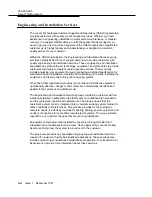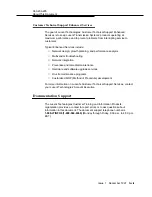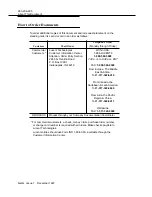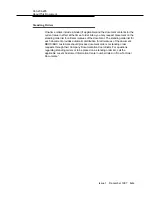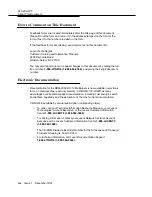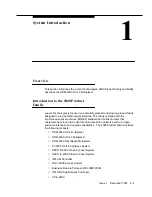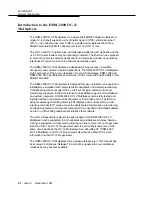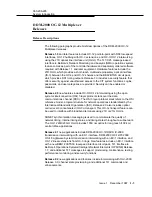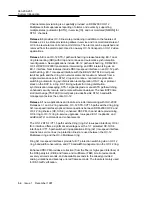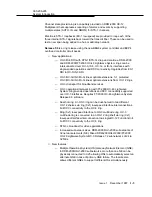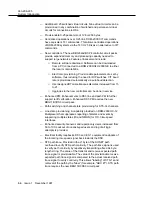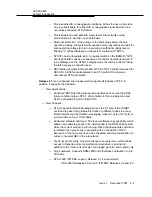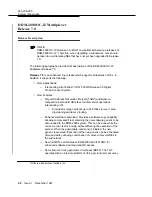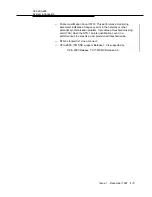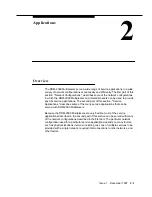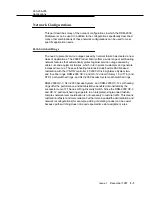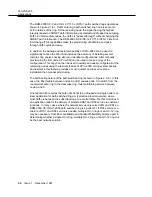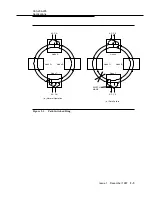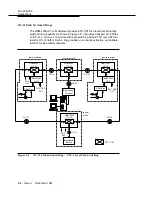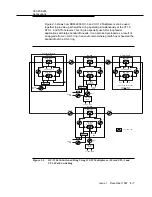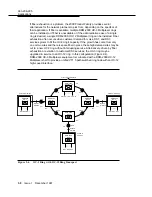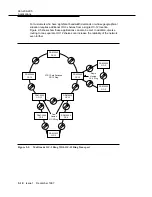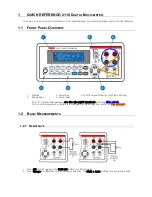
363-206-295
System Introduction
Issue 1
December 1997
1-5
Channel state provisioning is a capability provided on DDM-2000 OC-12
Multiplexers that suppresses reporting of alarms and events by supporting
multiple states (AUTO, IS, and NMON) for STS-1 channels.
Electronic STS-1 loopbacks (EC-1 low-speed) are provided to loop each of the
three internal STS-1 signals back toward the transmit fiber. These can be used to
test a new span being added to a hub or add/drop network.
Release 5.0 is a ring release using the new BBG8 system controller and BCP4
overhead controller circuit packs.
■
New applications:
— OC-3/IS-3 DRI with STS-1/STS-3c drop and continue. DDM-2000
and DDM-2000/FT-2000 OC-48 Lightwave System rings can be
interconnected over OC-3, IS-3, OC-3c, or IS-3c interfaces with
single-ended operations and DCC connectivity. Upgrades from EC-1
DRI to OC-3/IS-3 DRI.
— OC-3/OC-3c/IS-3/IS-3c linear optical extensions. 1+1 protected
OC-3/OC-3c/IS-3/IS-3c linear optical extensions from OC-12 rings.
— OC-3c transport for broadband services.
— OC-3 operations interworking with FT-2000 OC-48 Lightwave
System. Single-ended operations and DCC connectivity supported
over OC-3 interfaces. Requires FT-2000 OC-48 Lightwave System
Release 6.0 software.
— Dual homing. An OC-3 ring can be dual-homed to two different
OC-12 shelves via ring (0x1) low-speed interface interconnections.
Full DCC connectivity to the OC-3 ring.
— Ring (0x1) low-speed interface to OC-3 multinode ring. OC-3
multinode ring is connected to an OC-12 ring shelf via ring (0x1)
low-speed interface interconnection to a single OC-12 Function Unit.
Full DCC connectivity to the OC-3 ring.
— STS-3c broadcast for video applications.
— Increased subnetwork sizes. DDM-2000/
SLC-2000 subnetworks of
32 network elements (NE). Mixed DDM-2000/
SLC-2000/FT-2000
OC-48 Lightwave System/OC-3 Release 7.2 subnetworks of 24 to
32 NEs.
■
New features:
— Multiple Operations System (OS) Gateway Network Element (GNE).
In DDM-2000/
SLC-2000 subnetworks, more than one NE can be
physically connected to X.25 allowing OSs to automatically select an
alternate GNE in case of primary GNE failure. The feature also
allows different GNEs to support different OSs simultaneously.

